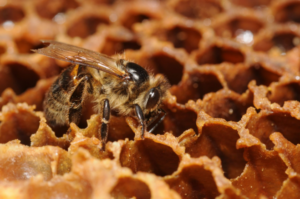As the weather warms and snakes emerge from hibernation, it’s a timely idea to refresh your knowledge about some of the snakes found around Perth, Western Australia.
Here are five of the most common snakes sharing the greater Perth region with us.
TIGER SNAKES
Tiger snakes (moyop in Noongar; scientific name Notechis scutatus). As their name suggests, this species resembles the white or yellow stripes of a tiger and averages 1.2 metres long.
They are found across southern Australia in damp and degraded areas. Unlike most Australian snakes, tiger snakes can climb to heights of 10 metres. Eeek!
The tiger snake avoids conflict but can become aggressive if threatened or cornered. If bitten by a tiger snake, its venom can be strongly toxic and requires immediate medical attention.
DUGITES
Dugites (toogitj in Noongar; scientific name Pseudonaja affinis) grow up to 2 metres long. They are dark, with glossy scales and small heads.
Dugites are found in coastal and urban areas, shrubland and agricultural country. They are some of the most common snakes found in urban Perth, drawn to places with house mice – their favourite snack!
Dugites are resilient and thought to be one of the only reptiles with an increased population through urbanisation.
Dugites are responsible for approximately 70% of snake bites in Perth. They are highly toxic – if you’re bitten, seek immediate medical attention. They are nervous creatures and have a snappy bite!
CARPET PYTHONS
The carpet python (wackul in Noongar; scientific name Morelia imbricata) is a greenish-brown snake with a yellow or cream belly. They grow to 2 metres long on average.
They enjoy bushland and grassland and are most active at night. Carpet pythons eat their prey by swallowing it whole after strangling it.
Carpet pythons are not venomous and are quite popular pets.
MULGA/KING BROWNS
The king brown snake or mulga (scientific name Pseudechis australis) is a formidable species with dark scales and red eyes, and they average 2 metres long.
They are the most widely distributed Australian snake species, found across all states except Tasmania and most parts of Victoria.
The behaviour of a mulga snake varies depending on its location – they have been observed to be shy in some areas and aggressive in others. If they do bite, they are wildly aggressive, hanging on and chewing. They are venomous, and bites require black snake anti-venom quickly.
WESTERN BROWNS
Western brown snakes (scientific names Pseudonaja aspidorhyncha, P. mengdeni, P. nuchalis) grow up to 1.5 metres long. They are slender and glossy, pale to medium brown with a lighter belly and a small, chisel-shaped head. Western browns have been observed to change colour seasonally, becoming darker in cooler months to better absorb heat.
They can often be found in arid and semi-arid habitats, with mostly P. mengdeni found around Perth.
Although they are skittish and not deemed aggressive, if threatened, a western brown will bite, and their venom is highly toxic and life-threatening.
KEEP CALM AND CARRY ON
If you encounter a snake, remain calm. Staying still and hanging back usually allows a snake to assess whether it is in danger and, most likely, continue on its way. Statistically, only two snake bite fatalities occur in Australia each year but it is best to be informed and wary.










